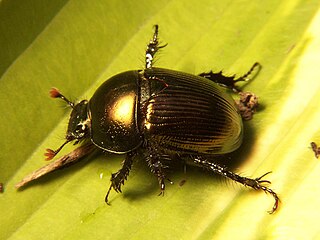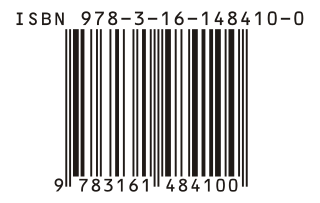Bolbocerosoma pusillum is a species of beetle in the family Bolboceratidae. It is found in North America.

Bolboceratinae is a subfamily of earth-boring scarab beetles in the family Geotrupidae. There are about 8 genera and at least 40 described species in Bolboceratinae.
Bolbocerosoma farctum, the fancy dung beetle, is a species of earth-boring scarab beetle in the family Geotrupidae. It is found in North America.

Bolbocerosoma tumefactum is a species of earth-boring scarab beetle in the family Geotrupidae. It is found in North America.
Bolbocerosoma lepidissimum is a species of earth-boring scarab beetle in the family Geotrupidae. It is found in North America.
Bolbocerosoma confusum is a species of earth-boring scarab beetle in the family Geotrupidae. It is found in North America.
Bolbocerosoma elongatum is a species of earth-boring scarab beetle in the family Geotrupidae. It is found in North America.
Bolbocerosoma bruneri is a species of earth-boring scarab beetle in the family Geotrupidae. It is found in North America.
Aulonothroscus validus is a species of small false click beetle in the family Throscidae. It is found in North America.
Platyceroides viriditinctus is a species of stag beetle in the family Lucanidae. It is found in North America.
Lachnodactyla texana is a species of toe-winged beetle in the family Ptilodactylidae. It is found in Central America and North America.
Ora discoidea is a species of marsh beetle in the family Scirtidae. It is found in Central America.
Scirtes tibialis is a species of marsh beetle in the family Scirtidae. It is found in North America.
Hadrobregmus alternatus is a species of death-watch beetle in the family Ptinidae. It is found in North America.
Pytho niger is a species of dead log beetle in the family Pythidae. It is found in North America.
Sacodes fuscipennis is a species of marsh beetle in the family Scirtidae. It is found in North America.
Nicagus obscurus is a species of stag beetle in the family Lucanidae. It is found in North America.
Ceruchus punctatus is a species of stag beetle in the family Lucanidae. It is found in North America.
Sandalus porosus is a species of cicada parasite beetle in the family Rhipiceridae. It is found in North America.
Bolbocerosoma ritcheri is a species of earth-boring scarab beetle in the family Geotrupidae. It is found in North America.



